Torres del Paine National Park: a place you can’t miss
Torres del Paine national park is one of the most incredible places on earth. It’s rough, untamed, and has been touched less by the people than other places.
The nature is incredible, with towering granite mountains with glaciers, turquoise lakes and rivers, raging waterfalls, and blooming pampas.
There are loads of things to do, from animal safaris to hiking to fishing and kayaking rides.
Not so many places to stay, so be sure to plan your trip quite well in advance.
The weather is crazy, especially the wind, so don’t be surprised if you must cancel some of the activities you have planned.
But it’s all worth it. And, if you can go to Torres del Paine, definitely go, as the views are definitely spectacular and shouldn’t be missed.
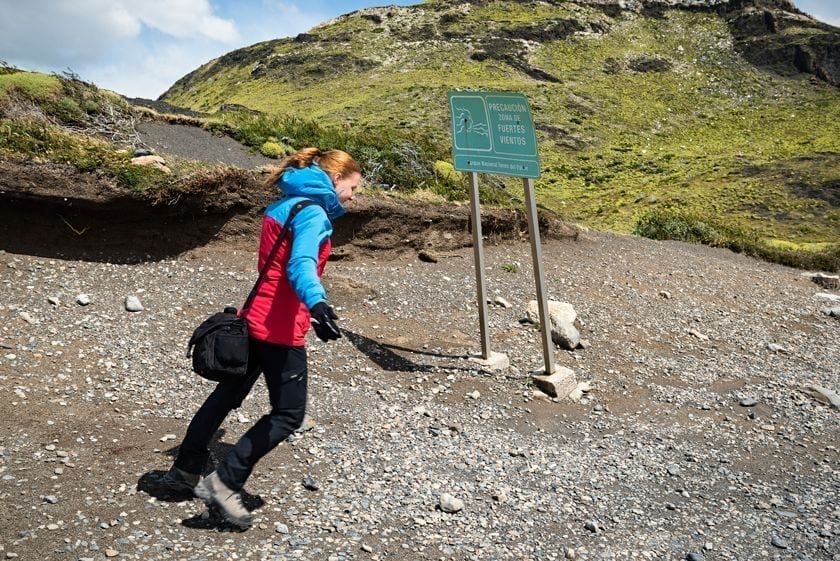
General information on Torres del Paine national park
Location: Chilean Patagonia. South of Chile, region Magallanes and Chilean Antarctica
Time zone: GMT -3
Currency: Chilean Pesos
Language: Spanish
Outlets: types C and L, which means 2 (like in Europe) or 3 round pins. 220V voltage.
Visa requirements: VisaGuide has a nice comprehensive list of visa-exempt countries. All EU citizens, UK and USA passport holders can visit Chile for up to 90 days without a visa.
How to access the Torres del Paine park?
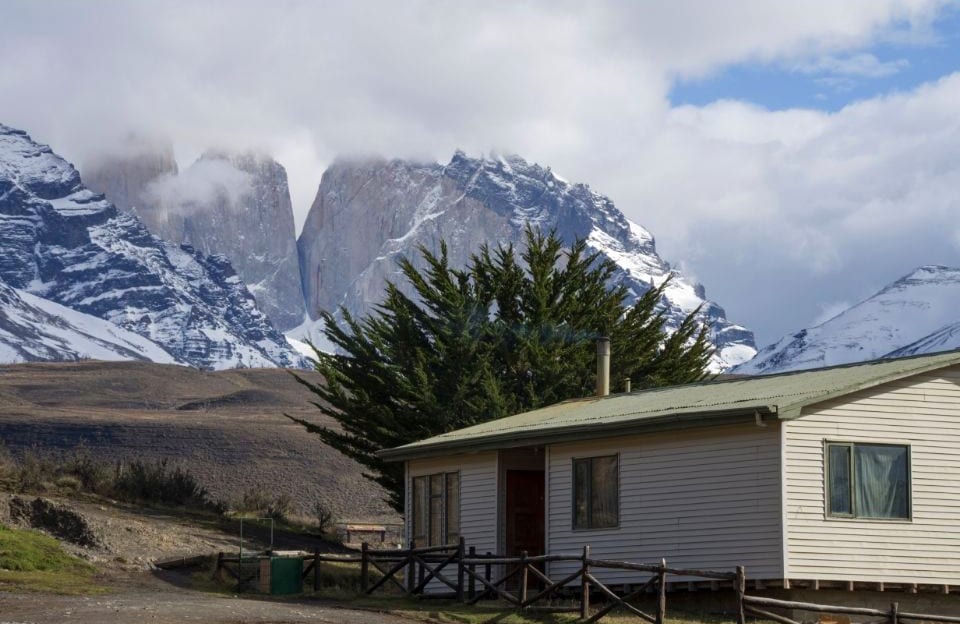
There are three entrances to the Torres del Paine national park: Rio Serrano, Laguna Amarga and Lago Sarmiento – that are mentioned on the official website of Torres del Paine, but it doesn’t seem like they have the most up-to-date information.
I’ve seen entrances Laguna Azul and Laguna Verde mentioned in some places as well, so I’ll show where these two are located as well.
It’s quite a pain to find these on Google maps even if you know where to look, so here are the locations and names of the entrances. I’ve even marked them on a map so that you don’t have to search and suffer.
The most Southern entrance is the Rio Serrano one. It’s located close to Hotel del Paine and is called Accesso Serrano Parque Torres del Paine on Google maps.
Laguna Amarga entrance is called Guardería Laguna Amarga – Base Administrativa CONAF on Google maps. It’s not far from Rio Paine and Puento Laguna Amarga, on the Y-156 road.
Lago Sarmiento entrance is Guardaparque Parque nacional Torres del Paine on Google maps, and it’s by Lago Sarmiento on the road Y-150.
Laguna Azul entrance to Torres del Paine is located at the eastern end of Laguna Azul, just off the road Y-160. It’s called Guardería Laguna Azul on Google maps.
I couldn’t find the Laguna Verde entrance anywhere on Google maps, but it seems to be at the end of the road Y-180, just after Hosteria Mirador del Paine.
How much does it cost to enter Torres del Paine?
The entrance to Torres del Paine is paid.
A ticket for a non-Chilean adult older than 18 costs 39$ for a less than 3 days visit and 56$ if it’s more than 3 days.
To enter the park, you must show a QR code of the ticket to the park rangers at one of the entrance stations. Tickets must be bought at least 24 hours before entering the park. You can buy them online on the official website.
How to get to Torres del Paine?
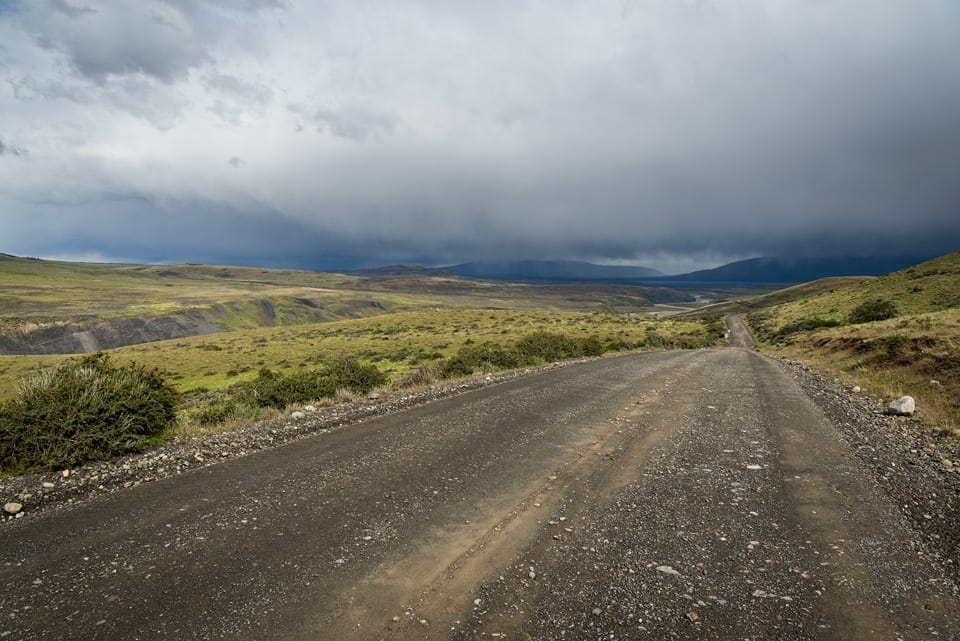
There are several options on how to get to Torres del Paine.
The most convenient ones are flying down to Patagonia – Punta Arenas, Puerto Natales or El Calafate – and then either driving or taking a bus from there.
Driving in Patagonia is actually quite easy.
It’s possible to drive or take a bus from Santiago, but it would take a very long time and cost a lot more than flying. Plus, you’ll have to cross the border into Argentina.
So we recommend that you rent a car in Punta Arenas and drive to Torres del Paine.
When is the best time to visit Torres del Paine?
It’s very hard to say “This is the best time to go to Torres del Paine”.
Patagonia has four seasons, and each of them has something special. There are some common things for all of them as well.
The most popular times to visit are spring, summer, and autumn – so October to April.
One thing is definitely the wind. It can easily go up to 100km/h – Patagonia is one of the windiest regions in the world. When we visited, the visitor’s centre in Torres del Paine had 80km/h – 100km/h – 80km/h written by chalk on a board inside.
And it’s not uncommon to experience all four seasons in a day, if not in 5 minutes, even if it is the summer.
But each of the four seasons has some benefits that you personally might like better than others. So to help you decide when is the best time for you to visit Torres del Paine, here are the descriptions of each season.
Spring
Spring in Torres del Paine lasts from September to November. The temperatures are just a bit lower than those in the summer, but the possibility of rain is higher. The weather in spring is usually unpredictable in Torres del Paine, but the winds are generally stronger than normal (and that’s saying something).
It’s the low season, so there are smaller crowds in Torres del Paine, but some hotels and even areas of the park could still be closed. The available accommodation will probably be cheaper, though.
Nature is in bloom, though, so you can get a chance to enjoy the sights and meadows covered with lovely wildflowers without the crowds.
Summer
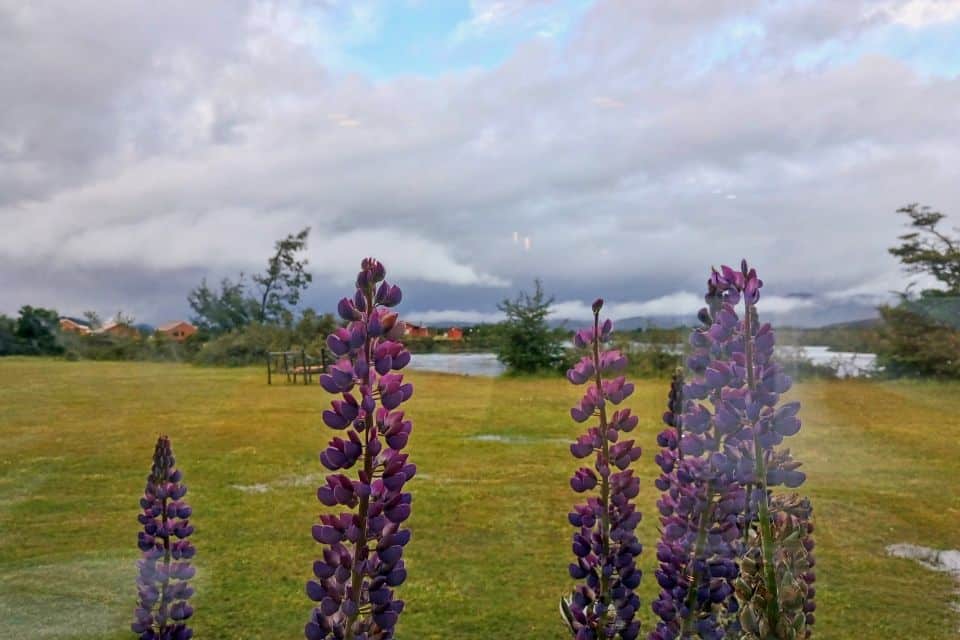
The most popular time to visit Torres del Paine is in summer. It lasts from December until February, and the weather is relatively warm. There are strong winds (but when aren’t there strong winds in Patagonia?) and a possibility of rain (and snow, and hail, as we experienced during our visit in December).
Since summer is the high season in Torres del Paine, everything is open – hotels, restaurants, and the park itself. But the crowds usually scare away some animals that might be seen during the shoulder/low seasons.
Most of the activities, like hiking, kayaking, etc., are easier done in summer, as the weather is warmer and there are more daylight hours.
Autumn
Autumn in Torres del Paine lasts from late March until May. The weather is getting colder, going into freezing temperatures at night, and there’s even a possibility of snow later in the season. On the plus side, though, the winds are getting less strong.
Photographers – and any other lovers of beauty – will definitely be enthralled by the colours of autumn foliage on the magnificent Torres del Paine mountains. Nature lovers will enjoy the sights of baby animals strutting about.
Autumn, like spring, is the shoulder season, so the crowds are winding down. But the accommodations are still open, which means a greater chance of getting a room in some of the best hotels in Torres del Paine!
At the end of the season, the services are getting reduced, so, if you wish to go in Autumn, make sure to check what’s available.
Winter
Winter is the off-season in Torres del Paine and the whole Patagonia. It lasts from June to early September.
The weather is cold and snowy, but the winds are milder. In winter, though, there are snowstorms possible.
Similar to Autumn, winter in Torres del Paine offers some great views that are perfect for photography. The mountains covered in snow look magnificent!
As for animal lovers, there’s a great chance to see some of the elusive pumas that live in Torres del Paine, as they come down from the mountains to look for food.
Although services are very limited, it’s still possible to do some of the adventure activities and hiking. You just have to make sure to book everything in advance, as most of everything (hotels, camps etc) will be closed.
There’s a strong possibility that many of the trails will be shut down due to snow as well, so make sure to check it out before booking anything.
On the plus side, there are very, very few people visiting Torres del Paine in winter, so you would have almost all of the park for yourself.
What accommodation is there in Torres del Paine?
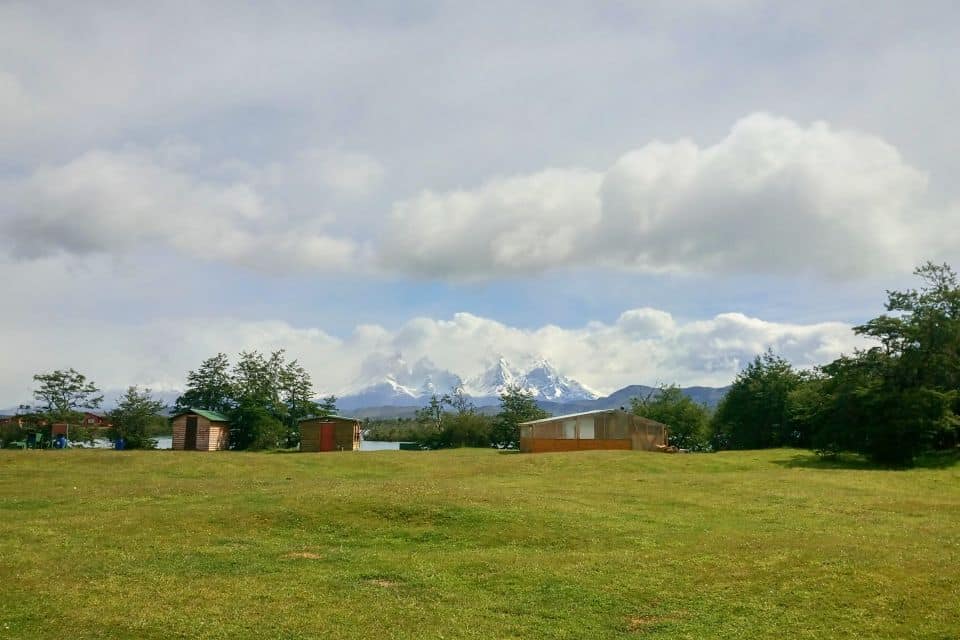
There’s not too much accommodation available in Torres del Paine itself, so it’s wise to book it very well in advance. In fact, you now can’t even stay at the campsites if you don’t have a reservation.
On the other hand, although there is a limited amount of accommodation available, there’s something for every budget in Torres del Paine.
Some of the accommodation listed here is inside the park, and some are just outside of its borders.
Note: it’s mandatory to book your lodging in Torres del Paine, even if you plan to stay in a campsite in your own tent.
There are quite a few options in Punta Arenas and Puerto Natales, which are a bit further away from the park. You just need to choose between a hotel and an apartment.
Hotels in Torres del Paine

As I mentioned, there are not too many hotels available, so if you’d like to stay in or very near the park, book well in advance. Especially if you’d like to catch a place that will not break the bank!
But it’s nice that there are places available for all budgets – and you don’t have to stay in a hostel to find an optimal price! Of course, optimal for Patagonia standards.
Many of the hotels have all-inclusive rates and they offer excursions, full board, as well as different other perks. Most of them have incredible locations and views from the rooms as well.
We personally stayed in Hotel del Paine and were very happy with what we got, which was a nice cabin, a chance to use the hot tub with an incredible view, as well as the location and food. For this hotel, though, a car is recommended. Although, unless you decide to go on multi-day hikes, I’d recommend renting a car in Patagonia.
Refugios and campsites in Torres del Paine
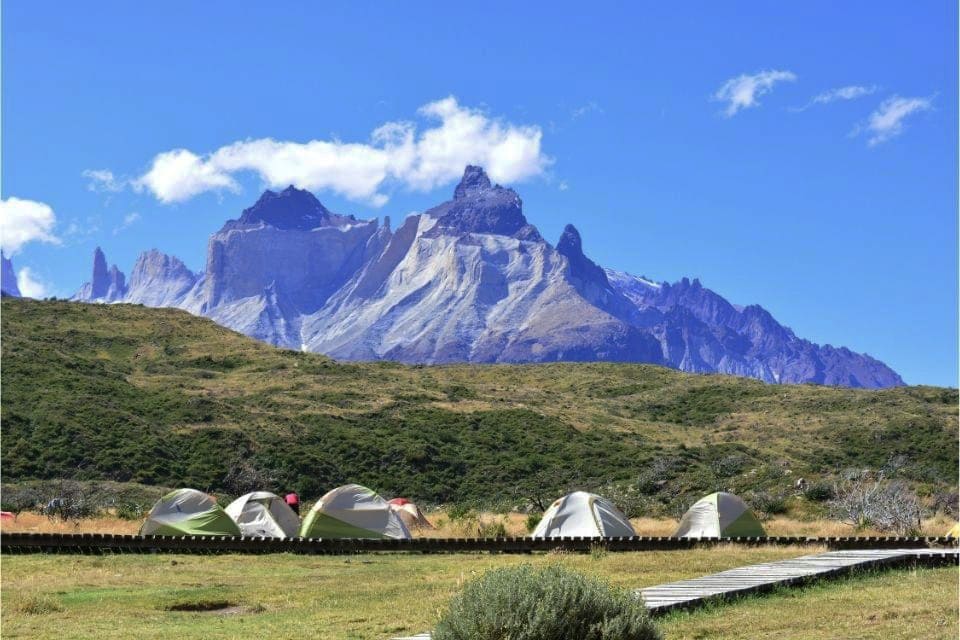
Refugios in Torres del Paine are basically hiking hostels. Since they are located near the hiking trails, they have campsites available as well.
Since refugios are privately owned, their adjacent campsites are paid.
The only free campsites are operated by the CONAF, which is a government organization. Those are campsites Italiano and Paso. Unfortunately, you can’t stay in them overnight for now.
The other campsites are operated by two companies: Fantastico Sur (Las Torres) and Vertice. Most of these are located near refugios operated by the same companies and you can get food there, as well as rent camping equipment so you don’t have to carry your own.
These are the refugios and campsites in Torres del Paine along the W and O treks:
- Refugio and Camping Paine Grande (Vertice)
- Refugio and Camping Grey (Vertice)
- Camping Italiano (CONAF)
- Camping and Domes Francés (Fantastico Sur (Las Torres))
- Refugio, Camping and cabins Los Cuernos (Fantastico Sur (Las Torres))
- Refugio and Camping Torres Central and Norte (Fantastico Sur (Las Torres))
- Refugio and Camping El Chileno (Fantastico Sur (Las Torres))
- Camping Serón (Fantastico Sur (Las Torres))
- Refugio and camping Dickson (Vertice)
- Camping Los Perros (Vertice)
- Camping Paso (CONAF)
Read more about each of these refugios and campsites in Torres del Paine in our article.
What food is there available in Torres del Paine?
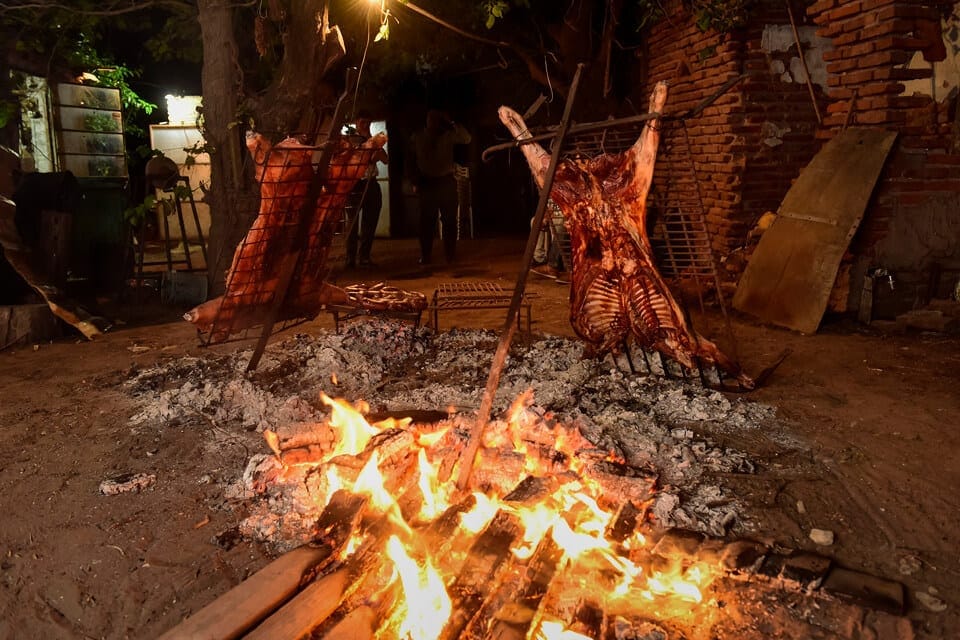
Food in Torres del Paine is a bit of a problem.
There are no specific restaurants – they are available only as a part of hotels and refugios. The restaurants offer breakfasts and dinners, as well as lunches which you can often get as a takeaway. These are perfect for days of hiking.
You don’t necessarily have to stay in the hotel to enjoy the dinner that they offer – so don’t be scared to try different places during your stay in Torres del Paine. There’s loads of interesting food to enjoy in Patagonia!
There is a café located near the Salto Grande waterfall. It offers soups, salads, and sandwiches. But be aware that, since it’s the only café in Torres del Paine and located near a very popular landmark, it’s usually very full.
Some of the refugios have convenience stores available with some limited options, but be aware that the prices are not low.
The best option, if you’d like your own snacks, is to get them in a supermarket before arriving in the park. We’d recommend shopping in Punta Arenas if you go there, as the supermarkets in Puerto Natales have a smaller choice and higher prices.
There’s a restaurant in Cerro Castillo Estancia El Ovejero Patagonico – about an hour’s drive from the eastern parts of Torres del Paine which we can recommend. It’s especially convenient if you continue on to Argentina after visiting Torres del Paine.
What animals are there in Torres del Paine?
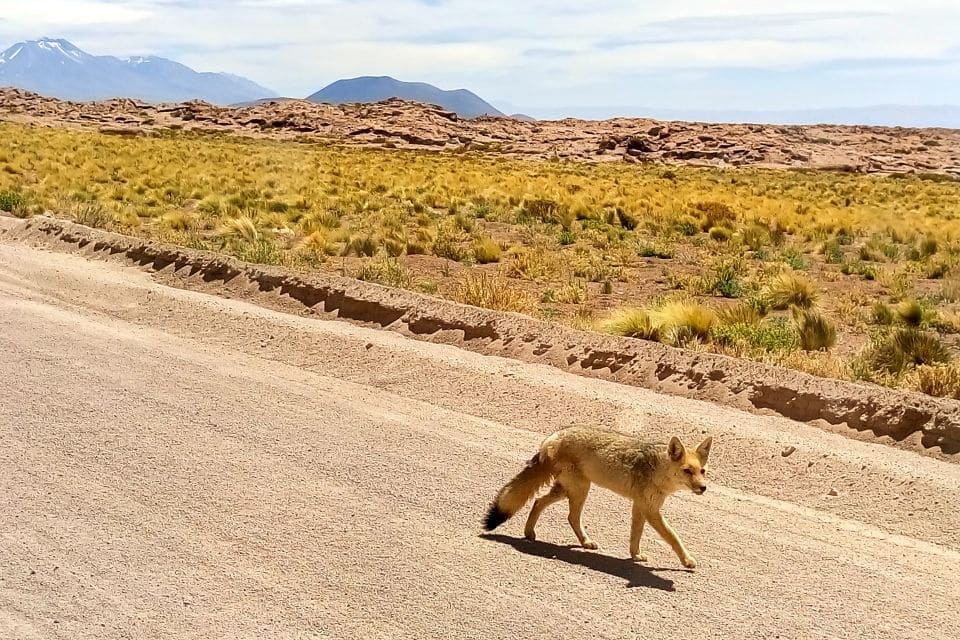
Since the climate in Torres del Paine is rather harsh, it might come as a surprise to you that there is actually quite rich and interesting wildlife in the park.
With 120 types of birds, 250 types of plants and 25 mammals, Torres del Paine really cannot complain about lack of diversity in flora and fauna.
It might come as a surprise to you, though, that there are some animals in this national park, especially birds, that you would expect to see in the tropics, not next to glaciers.
Examples? Sure! Flamingos and parakeets!
Many of the animals are close to extinction, mainly because of the loss of habitat, which is actually really sad. Examples of those would be the huemul deer and condor, both of which are actually on the coat of arms of Chile.
On the other hand, Geoffroy’s cats used to be endangered, but because of conservation efforts, it’s not anymore! Yay!
What activities can you do in Torres del Paine?
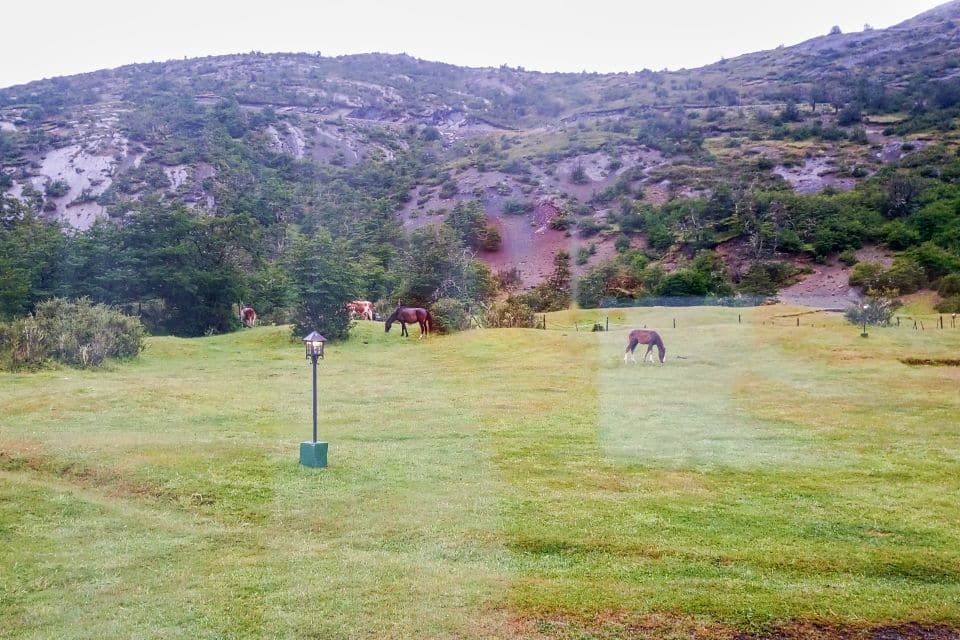
There are different activities in Torres del Paine National Park for different tastes and levels of physical ability.
You can, obviously, go hiking – there are many trails that don’t require overnight stays in a tent or even a high level of endurance. There are even guided glacier hikes available!
But there is so much more available!
There are all kinds of outdoor activities in Torres del Paine – kayaking, and fishing, and horse-riding, mountain biking, and even puma tracking! So many activities and most of them don’t require any prior knowledge.
At the end of the day, if the weather doesn’t really allow you to do any of the paid activities as it did for us, there’s always sightseeing and enjoying a glass of wine in a hot tub.
Last words about Torres del Paine
Torres del Paine is definitely one of the most interesting parks in Patagonia.
There are loads of things to do and even more to see.
If you’re looking for a unique vacation idea, this is definitely a place you should visit. The scenery will definitely leave you impressed.
Just know that the wind will probably knock your hat off. And maybe your socks as well.
Like this article? Share it!
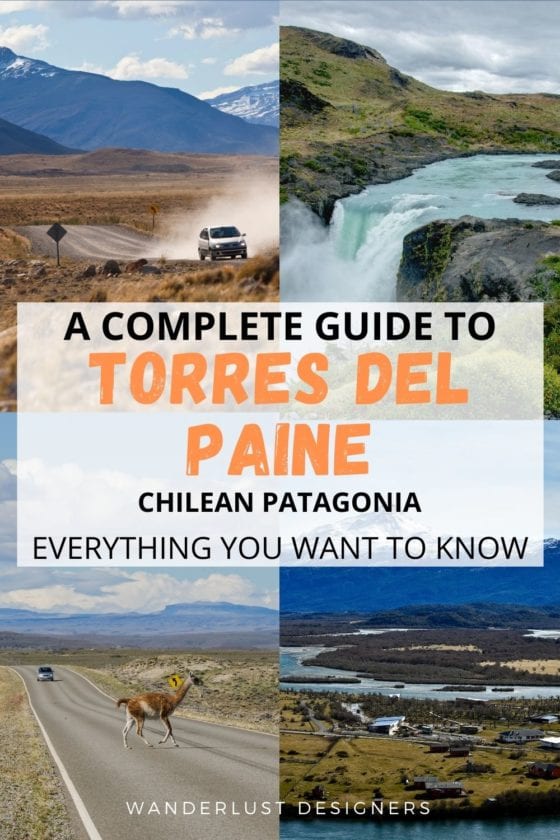
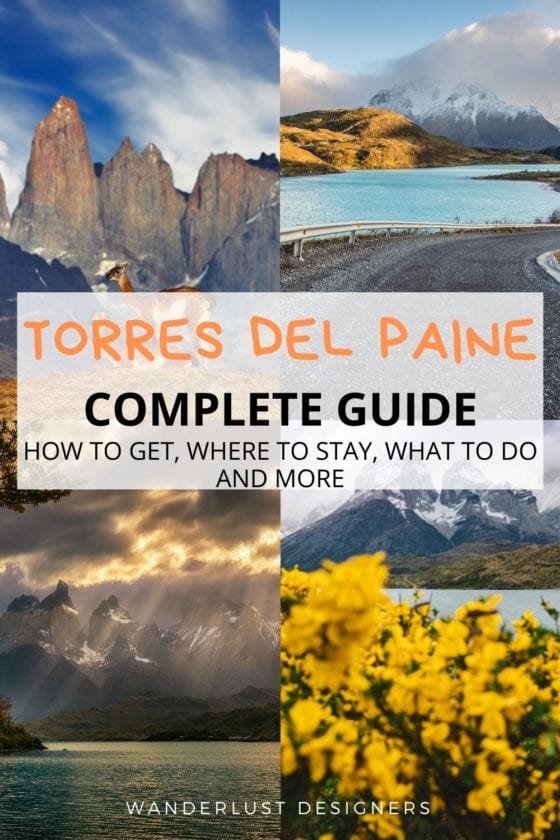


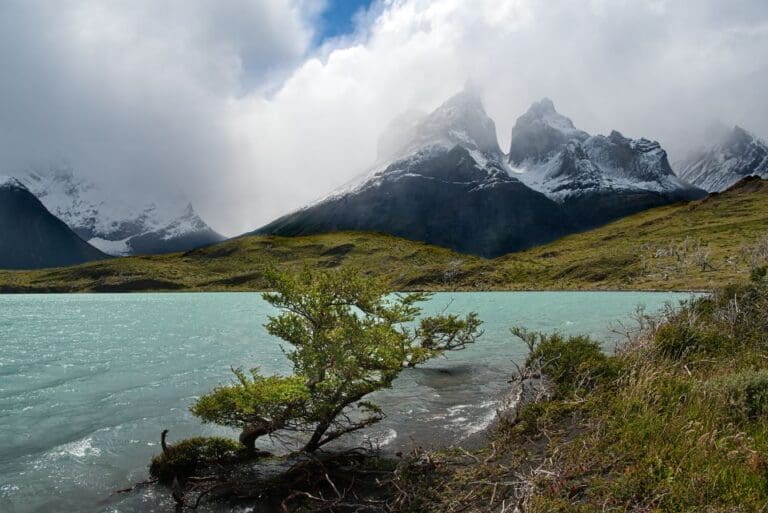


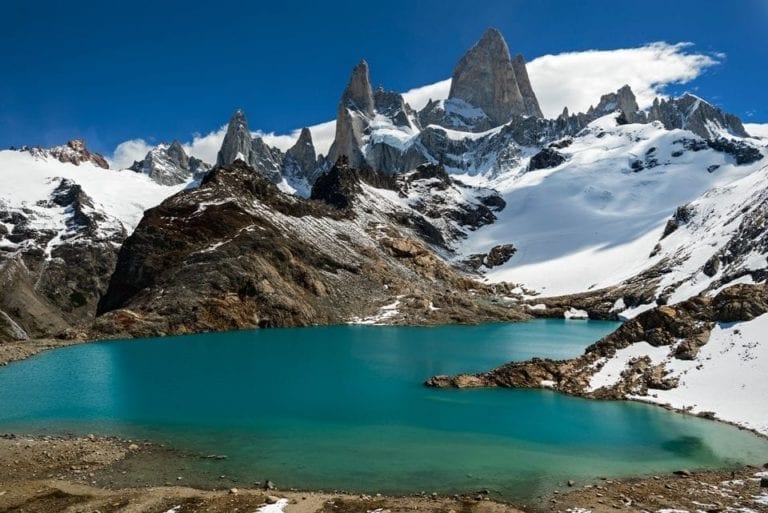

We are going to Patagonia January 13 flying in at 5:15 PM. We have a hotel room there until the 16th. We are then driving to Ea chaltan and we have a hotel there until the 19th. We then travel to Torres del Paine and we are staying in pampa lodge (which appears to be in the park). We are staying there until the 22nd and going to Punta arenas for one night and flying to Santiago, Chile on the 23 rd. We (my wife and I) have no problems hiking 15 to 30 kilometers per day but not every day. Would it be possible to talk to you on WhatsApp. Or could you make some suggestions on the trails to hike in the various places. We booked a trip including a boat to the glacier in El Chalatan but I’m not sure that is even optimal if we could see the same by hiking ourselves. We are not bringing shoes for walking on the ice so mainly just want to see the glacier there.
We will need to rent a car in El Calafate and take the car back after we visit Torres del Pine. I should have flown into Punta as you suggested but unfortunately I did not see your post at the time I booked the flight.
If you can make some suggestions I would really appreciate it.
Hi James,
Sending you an e-mail.
Thanks for reaching out!
Kristine 🙂
Thank you for the information on the entrances – it is very helpful! Do you know if you can enter the park at any time or would there be times that the gates are closed? We are traveling in January/February and would be entering via the rio Serrano entrance. Hoping to get early starts to our hikes!
Hi Layla,
Thanks! I’m glad it helped!
As for entering the park, hm, I’m not even sure anymore. What I do know is that during the pandemic they limited the park hours, but that has been cancelled. You do need to validate the ticket before your first entry and the rangers are there from 8-19 every day. But after that, at least when we were in Patagonia, we could just enter any time. Michal actually went for sunrise photography there through the Rio Serrano entrance. But make sure to check when the trails open. and some trails actually require you to have a guide.
Hope this helps!
Kristine